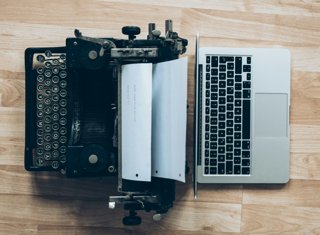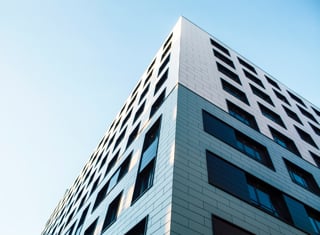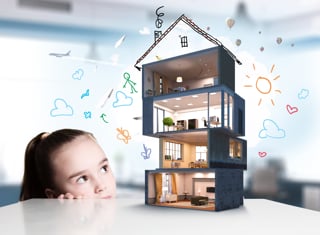The reality of indoor living – Time to think about resiliency in buildings

The indoor environments where we spend most of our time, impact our lives. How and where we live, work and the things we enjoy affect our lives – every day, every year for the expected 72-78 years we live.
The structure of our modern lives has made us spend more time indoors than ever
- We spend 90% of our time indoors.
- We spend 1/3 of our lives sleeping, typically at our home, but occasionally in other places - like hotels.
- We spend about 10+ years working and in work-related activities, and another 20+ years on leisure activities.
From living outdoors in danger, to moving indoors for protection
In the Stone Age (about 2.6 million years ago until about 3,300 B.C.), people spent most of their time outdoors, hunting and collecting food. Back then, our lives were focused on seeking a safe and protected environment, not completely unlike today, but we have gone from caves, shelters, to castles, apartments and modern houses. All of them being structures over our heads to provide a safe place where we can feel protected.
We are the indoor people
What should we call ourselves based on our indoor living habits? Are we 'indoor species', or perhaps is the 'indoor generation' a more accurate description, or should we call ourselves the 'indoor people'? But how did we end up here? And when did we start to spend so much time indoors?
It did not happen overnight; it was a gradual process happening because of different reasons. One significant occurrence during the past 200 years is the fact that workers have migrated from outdoor workplaces like fields and farms to factories and offices, the latter mostly indoors. This further correlates with how the industrialisation era enabled people to lead different lives – many went from being food hunters and gatherers to being more domestic-oriented and living modern lives. The modern world has advanced rapidly with numerous technological developments, many of them impacting the overall life expectancy and people's health and well-being.
"From 1800 to 2000, we’ve gone from 90% of people working outside to less than 20%. In a very short time, we’ve gone from being an outdoor species to spending most of our time in dim, dark spaces indoors."
Dr Russell Foster, Head of the Nuffield Laboratory of Ophthalmology and the Sleep and Circadian Neuroscience Institute, University of Oxford
What is 'indoor living' doing to our health, well-being and productivity?
Modern lifestyles are led inside buildings, we live, work and relax indoors. That makes our indoor spaces crucial for our well-being. In terms of the air we breathe, it is essential to understand the implications for our health of living indoors and outdoors.
Indoor environments directly impact our health, which is why it is also proven that improving our indoor environment brings significant health benefits. Throughout history, people have been affected by outdoor elements such as air, sun, wind and rain. Today, those elements are pretty much air pollution, outdoor and indoor particles, which bring various health-related risks.
However, other occurrences can influence our ways of living and our well-being.
What happens when unexpected challenges arise?
We are a 24/7/365 repeat society and we prefer to be prepared for everything. But what happens if we cannot be prepared, if we don’t know what will happen, or if things change rapidly, dramatically or unexpectedly? These uncertainties are not unrealistic, but not always planned for:
- Climate change and weather-related disruptions such as natural disasters, extreme weather patterns, sea-level rise, worldwide temperature fluctuations, heatwaves and snowstorms, wildfires and flooding, earthquakes and volcanic eruptions.
- Global health-related outbreaks, including pandemics and epidemics (building-related illnesses and long-term issues, indoor environmental and indoor air quality, problems with humidity and moulds, outdoor/indoor air pollutants and allergens).
- Technological and infrastructure failures such as power outages, failure of building systems, interruption in water and food supply etc.
- Human-caused events such as interruption of information transmission, rapid policy/regulations shifts, natural resources and material disasters, mass migration and behavioural changes, to mention some.
When we try to prepare or respond to the above, we turn to our basic instinct and seek shelter - in buildings that can keep us safe.
Is resilience a key?
As extreme events become more frequent, unpredictable and intense, buildings must adapt to protect lives, investments and ecosystems more frequently and perhaps better than before. A key element is resilience in healthy buildings, where the built indoor environment is no longer an option but a necessity. A sincere health, sustainability and resiliency perspective must be included in buildings to truly focus on people’s health and well-being.
Buildings must be designed for human needs, built to impact the environment as little as possible and with resilience and adaptability as a strategy. This includes preparing buildings for efficient adjustments and implementations of technological advancements using intelligent predictive methods.




